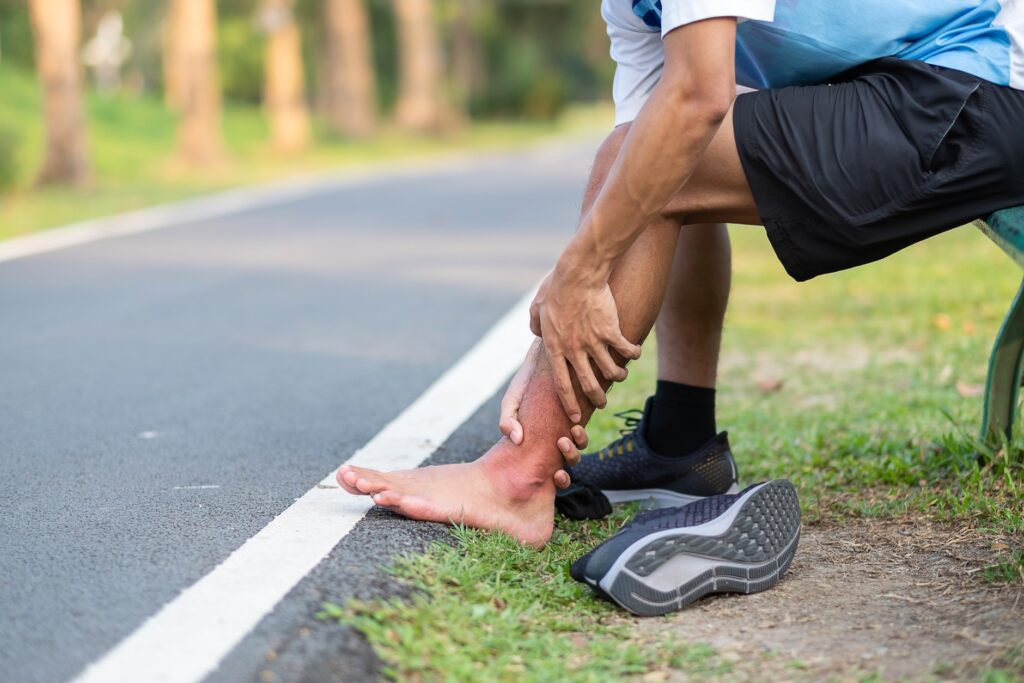What is an Ankle Sprain?
An ankle sprain is a common injury. It happens when the ligaments in your ankle stretch or tear. Ligaments are strong bands that hold your ankle bones together. Often, an ankle sprain occurs when you twist or roll your foot in an awkward way. This injury can cause ankle pain, swelling, and trouble walking. Anyone can get an ankle sprain, but it is more common in people who play sports or walk on uneven ground.
Symptoms of Ankle Sprain
Recognizing the signs of an ankle sprain is important. Early care can help you heal faster. Common symptoms include:Sudden pain in the ankle after twisting or rolling itSwelling around the ankle jointBruising or discolorationTenderness when you touch the ankleDifficulty walking or putting weight on the footA popping sound at the time of injury
Sometimes, the pain may be mild. Other times, it can be severe. If you notice these symptoms, it is best to rest your ankle and seek advice.
Common Causes of Ankle Sprain
Many things can lead to an ankle sprain. For example, you might step on an uneven surface or land awkwardly after jumping. Here are some common causes:Walking or running on uneven groundWearing shoes that do not support your feetPlaying sports that involve jumping or quick turnsAccidents, such as tripping or fallingWeak or tired ankle muscles
Because ankle ligaments are delicate, even a small twist can cause injury. Staying aware of your surroundings can help prevent accidents.
How is Ankle Sprain Diagnosed?
If you think you have an ankle sprain, a doctor can help. First, your doctor will ask about how the injury happened. Next, they will check your ankle for swelling, bruising, and pain. Sometimes, they may move your foot to see how much you can move it. In some cases, your doctor may order an X-ray. This helps rule out a broken bone. Rarely, an MRI is needed to check for severe ligament damage. Quick diagnosis helps you get the right treatment.
Treatment Options for Ankle Sprain
Treating an ankle sprain depends on how bad it is. Most mild sprains heal with simple care at home. However, severe sprains may need more help. Common treatment steps include:Rest: Avoid putting weight on your ankle.Ice: Apply ice packs for 15-20 minutes every few hours.Compression: Use an elastic bandage to reduce swelling.Elevation: Keep your ankle raised above heart level.Pain relief: Take over-the-counter medicine like acetaminophen or ibuprofen.Physical therapy: Gentle exercises can help restore strength and movement.
Sometimes, a doctor may suggest a brace or crutches. Rarely, surgery is needed if the ligament is badly torn. For the best care, look for ankle sprain treatment near you.
Home Care and Lifestyle Tips
Proper home care can speed up your recovery. Here are some helpful tips:Rest your ankle as much as possibleApply ice packs to reduce pain and swellingWear supportive shoes to protect your ankleDo gentle stretching and strengthening exercises as advisedAvoid activities that cause pain or discomfort
As your ankle heals, increase your activity level slowly. This helps prevent another injury.
Preventing Ankle Sprains
While not all ankle injuries can be avoided, you can lower your risk. Try these prevention tips:Warm up before sports or exerciseWear shoes that fit well and support your feetBe careful on uneven or slippery surfacesStrengthen your ankle muscles with regular exercisePay attention to signs of tiredness or weakness
Because prevention is key, always listen to your body. If you feel pain or weakness, take a break.
When to See a Doctor
Most ankle sprains heal with home care. However, you should see a doctor if:You cannot walk or put weight on your footYour ankle looks deformed or very swollenPain and swelling do not improve after a few daysYou have numbness or tingling in your footYou suspect a broken bone
Early medical care can prevent long-term problems. Do not ignore severe symptoms.
In summary, ankle sprains are common but treatable injuries. With the right care, most people recover fully. Consult an orthopedic specialist for personalized advice on ankle sprain recovery and prevention.
Consult us today at Alyantra Medcity for expert guidance!


